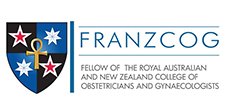Fertility Testing for Women
A woman is tested for infertility if she has not been able to conceive after one year of unprotected intercourse. If you are older than 35 years of age, it is advisable to get tested after six months of trying without success. Early diagnosis is also advised if you have a history of irregular periods (cycles that are 35 days apart or lack of periods), suspect or have a history of problems in your fallopian tubes, uterus or abdominal cavity, or suspect or are aware of issues with your partner’s infertility.
Some of the tests that are ordered to evaluate infertility include:
- Semen analysis: A semen sample collected from the male partner is evaluated for the number, movement and shape of the sperm.
- Ovarian reserve testing: This test is performed to determine how many viable eggs are present in your ovaries for fertilization and if your ovaries respond normally to hormonal signals from your brain. Your ovarian reserve (number of good quality eggs) begin to reduce with age, so this test is performed if you are more than 35 years of age, have a family history of early menopause, single ovary or have had surgery or cancer treatment to the pelvic region. Your ovarian reserve can be measured by counting the number of egg sacs during the beginning of the menstrual cycle or by measuring levels of various hormones in the blood such as follicle stimulating hormone (FSH), antimüllerian hormone (AMH), oestradiol and/or inhibin-B.
- Other blood tests: Levels of thyroid-stimulating hormone (TSH) are measured to identify thyroid disorders. Prolactin levels are measured to test for hyperprolactinemia. These hormones can indicate menstrual irregularities, infertility and repeated miscarriages. Hormones dehydroepiandrosterone sulfate (DHEAS), total testosterone and 17-α hydroxyprogesterone, are tested if you have increased hair growth on your face, chest or abdomen.
- Urinary luteinizing hormone (LH): Over-the-counter ovulation kits help detect the time of ovulation (egg release) one or two days before it happens. This indicates when you are most fertile.
- Transvaginal ultrasonography: This involves the placement of an ultrasound probe in the vagina to create images of the uterus and ovaries for any problems such as ovarian cysts and fibroids.
- Sonohysterography: A transvaginal ultrasound is used after injecting saline into the uterus to improve visibility and helps detect fibroids and endometrial polyps better.
- Hysterosalpingogram (HSG): This test is performed to evaluate the uterus and fallopian tubes for viability. A narrow tube (catheter) is inserted into the cervix and a contrast dye is injected. X-ray imaging picks up the path of the dye through the uterus and out through the tubes. If the tubes are open, the dye spills out through its ends.
- Hysteroscopy: A lighted scope called hysteroscope is inserted into the cervix to view the uterus and help diagnose and treat uterine problems such as fibroids, polyps and scar tissue (adhesions).
- Laparoscopy: A lighted scope called a laparoscope is surgically passed through a small incision on the abdomen into the pelvic cavity to detect problems such as endometriosis and pelvic adhesions.
Diagnostic testing for female factor infertility is planned while considering the least invasive methods first. Age, duration of infertility, and unique findings of medical history review and physical examination should be considered for evaluation.







